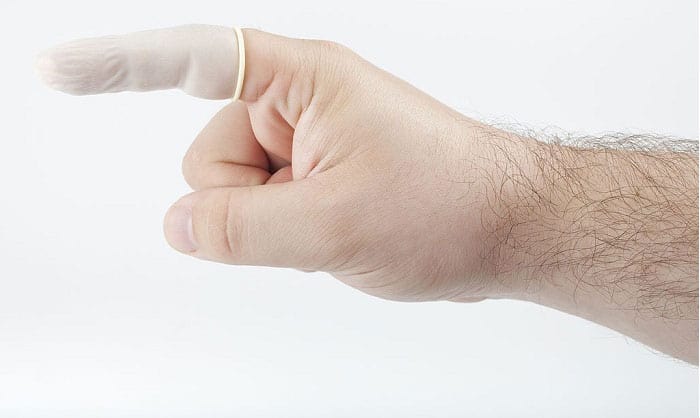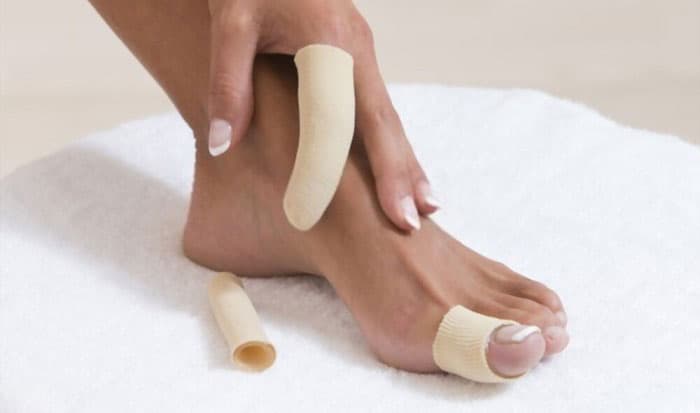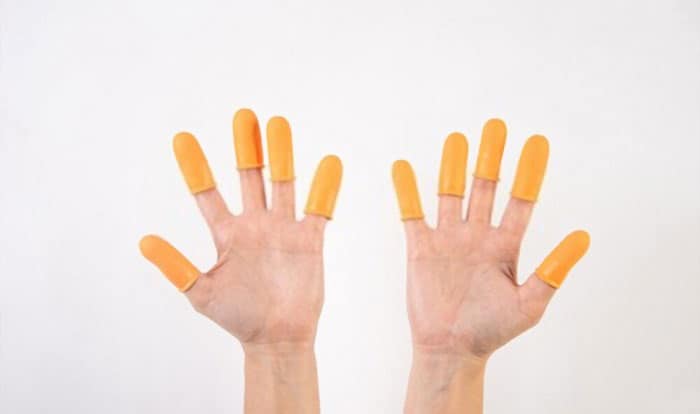We sometimes notice people wearing a protector for one or two of their fingers, not the whole hand. And, such a sight indeed piques our curiosity. What are individual finger gloves called? What are they for?
Instead of putting on usual gloves that cover our hands, many people, for different reasons, put on a glove for a single finger, which is called a finger cot.
Here’s everything you should know about a finger cot.
Table of Contents
What Can We Call Individual Finger Gloves?
Designed to cover one finger only, these gloves without fingers name is finger cot. Sometimes, these gloves without fingers are called a finger stall or also finger frock. If you hear one of these three names mentioned, you can immediately confirm it’s the type of protector for one single finger.
Are these finger cots similar to toe protectors since they also come in separate pieces? The answer is no, not really.
In fact, a finger cot is often longer yet smaller in diameter than a toe protector. So, dimension is among the details to tell them apart.
Furthermore, even though both are designed to cover a single toe and finger, not the whole thing, their protective purposes are different. While the finger scot aims to prevent contamination of outer elements, a toe protector is designed to reduce friction against the hurt skin for quicker recovery.
One more important difference is that the finger cot is often made of vinyl, nitrile rubber, and mostly latex. These materials are watertight, preventing moisture and chemicals from touching our fingers.
On the other hand, we can notice most toe protectors are soft due to their mineral oil gel construction. And instead of being tightly fit like a finger slot, a toe protector can have an open or closed-end.
What Are These Individual Finger Gloves Used for?
These helpful finger cots are used in various tasks, including medical care. Users can rely on this piece to protect their fingers from infection, as it prevents a direct exposure to contamination.
Furthermore, they allow us to grip better on small instruments, allowing better accuracy in handling tasks. Due to such a wide range of use, they are important companions in different duties.
For medical settings:
- The finger cot protects our cuts, burns, or blister wounds from further hurt by dirt, chemicals, bodily fluid, or oxygen. Putting a clean piece on will help the wound recover faster.
- Medical workers use finger cots for procedures like applying topical medications on patients’ skin or digital rectal exams (DRE). Patients can also wear this piece to apply ointment and cream to their wounds.
- We can wear a finger cot over our bandages to keep them in place. Since this piece is watertight, wearing it over the bandage will prevent moisture from loosening the adhesive.
- Instead of spending money on a whole pair of latex gloves, users can put on one finger cot to insert suppositories for constipation. This piece can ensure both sanitary and safety for patients.
For other tasks:
- Art and craft – Precision and flexibility are essential for creating artwork or doing crafts. In these tasks, a thin wool glove will require expensive cleaning afterwards, and a latex or nitrile pair is not that breathable. Therefore, covering our fingers with a disposable finger cot is highly recommended.
- This piece allows us to handle paints, charcoal, or gels better. Also, we can prevent glue and wax from sticking on our fingers, thus protecting ourselves while maintaining good dexterity and comfort.
- Electronic and lab work – When working with sensitive parts in an electronic device, we need a protector that prevents damage caused by our oily fingers. Since wearing rubber gloves cannot eliminate static discharge and might ruin those parts, a small finger cot might help.
- It also prevents us from scratching lab instruments or leaving fingerprints on film and CDs. Therefore, it is essential and convenient to use a finger cot to handle electronic and lab devices.
- Beauty care – Beauty salon and barbershop workers also benefit from these convenient finger protectors. When dealing with wax, hair dye, bleach, or treatment agents, the finger cots can prevent contact with harmful chemicals while maintaining precision and breathability.
- Industrial tasks – What is unexpected for most people is how these gloves help in industrial settings. In fact, workers can put the finger cots on to touch oil, grease, dirt, and other hazards. With that, they can perform with safety and good tactical sensitivity.
- Pet care – Finger frocks are also used in handling professional dog grooming tools. These small pieces will not compromise our grip while ensuring good sanitation during the pet care service.
- Watch and Jewelry care – Latex or vinyl gloves should be worn when holding a watch and jewelry to avoid staining those items with oil, grease, and Alternatively, using small finger cots can help us create, clean, and hold the watches and jewelry with care.
Benefits of Finger Cots
If you have never heard about these protective pieces before, you would be surprised by how beneficial they are:
- Low cost – Needless to say, finger cots are available at a lower price than full gloves.
- Better breathability and comfort – If the situation allows, we can opt for these soft and breathable finger cots. They bring more comfort than covering our hands with latex or nitrile gloves that might make our hands sweat in hot weather.
- Convenience – These pieces are easy to wear and discard, as simple as that. Also, we can keep some of them in our pockets for a replacement since they are very compact.
- Waste reduction – If we do not have to wear a full glove which is mandated or required by our work, opting for a smaller piece like this product will reduce the waste thrown into our environment.
Conclusion
Gloves are designed in different forms and materials, serving specific protecting purposes. That’s why we have fingerless gloves, full gloves, long-cuff ones, and even individual finger gloves.
With the information above, hopefully, you have satisfying answers to all your questions, including “what are individual finger gloves called?” If you intend to use one in the future, make sure to find a suitable option with quality materials and functionality.
We would like to help with that; just leave a comment for us. Thank you for reading!

This is Edward Manning, the editor in chief of Construction Informer. Quite a bit of my time is spent researching the market and interviewing experts in the field so that I can give you reliable information.




